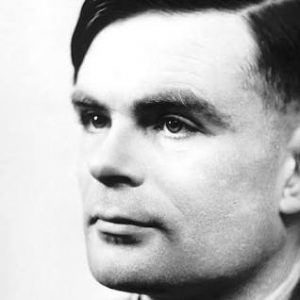 Alan Turing and the Turing Test
Alan Turing and the Turing Test
Alan Turing was a British computer scientist, among other roles, who made great strides in the field of artificial intelligence in the 1930s, 40s, and 50s. He published “On Computable Numbers, with an Application to the Entscheidungsproblem,” which dealt with decision methods, and developed the Church-Turing thesis, essentially stating that all human computation can be achieved by the Turing machine, or a model of a machine which could perform computations on an infinitely long tape. For our purposes, this is interesting because it outlines the limits of human computation. This comes into play in the Turing Test, which then determines whether a computer can think like a human, or exhibit artificial intelligence, under certain conditions. This test consists of three terminals, one operated by a computer respondent, one operated by a human respondent, and one operated by a human questioner. The human questioner, after completing a set of questions on a specific topic, must decide which respondent is human and which is the computer. A computer has passed the test if they are indistinguishable from a human, demonstrating that the computer possesses artificial intelligence. While this test has fallen out of favor as computer science has advanced, this was an incredible advent when it was published in 1950. We can use this framework to conceptualize today’s technology, as one can describe Microsoft Excel as a Turing machine, or imagine that Chat GPT might pass a Turing Test.
Hi Julia,
I believe that what Alan Turing found and accomplished truly is fascinating. It is crazy to think that back in the 1930s, 40s, and 50s someone was working on AI and that it would still have such a huge impact today. I think you did an excellent job connecting Turing’s discoveries with our class content. It really does put into perspective just how important his work was and how it continues to make an impact to this day.